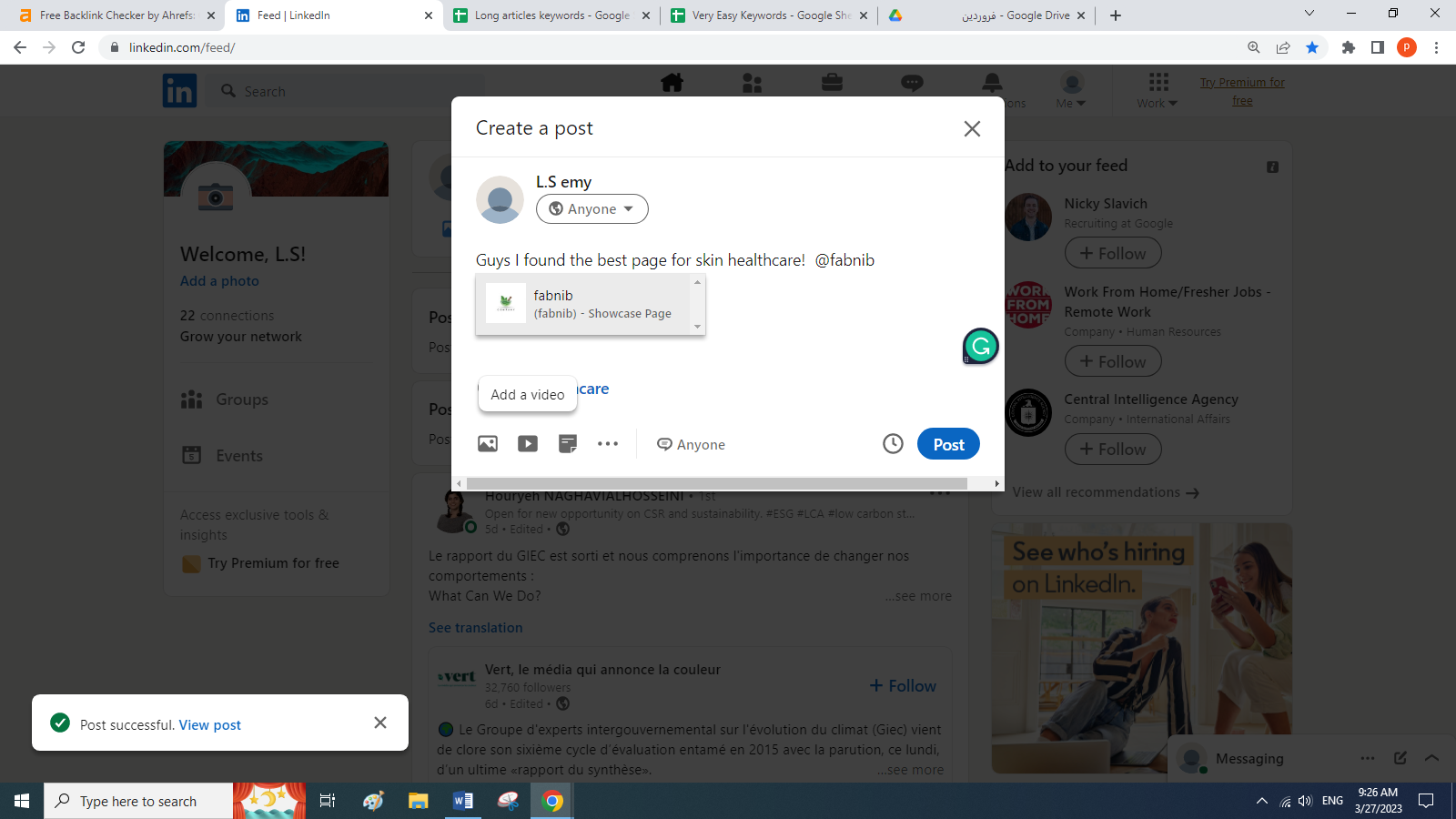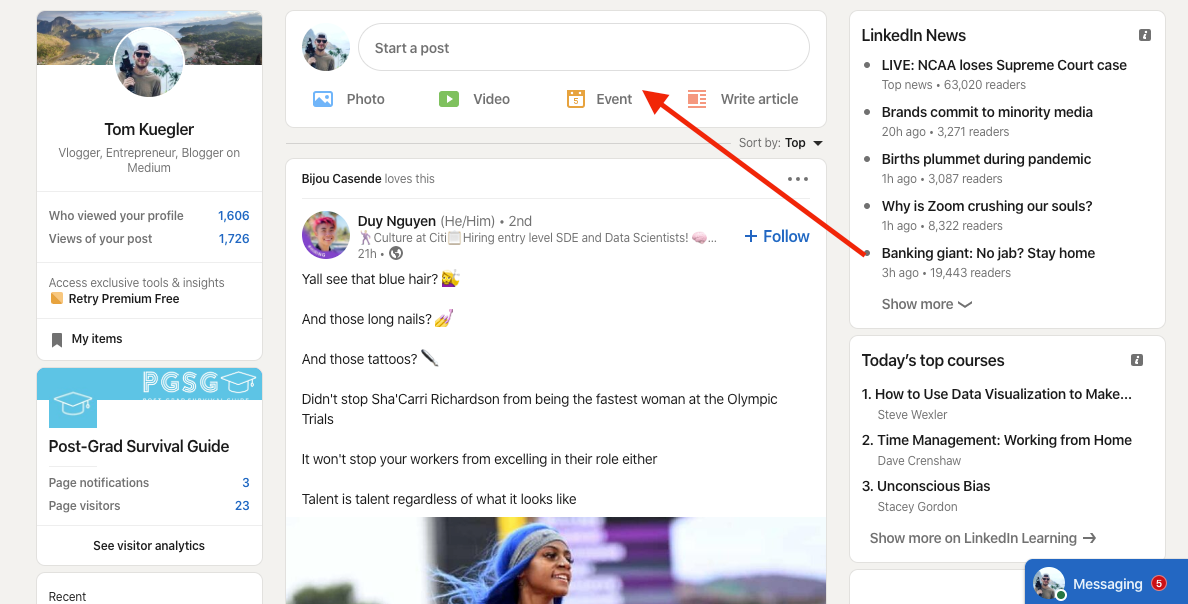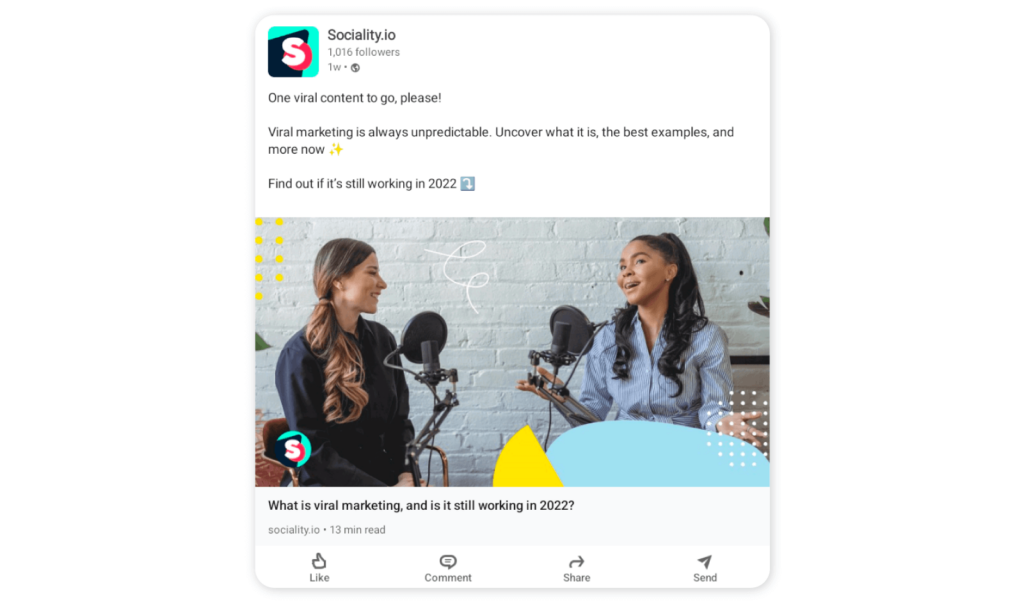Posting links on LinkedIn is a fantastic way to share valuable content, whether it’s your own blog, articles, or relevant industry news. This feature can help you engage with your network, establish your expertise, and even drive traffic to your website. If you’re a beginner, it might feel a bit daunting at first, but don’t worry! In this guide, we’ll walk you through the process step by step, making it as easy as pie.
Step-by-Step Guide to Posting Links

Ready to dive in? Here’s a simple, straightforward guide to help you post links on LinkedIn like a pro:
- Log into Your LinkedIn Account: Start by signing into your LinkedIn account using your credentials. If you don’t have an account, you’ll need to create one.
- Navigate to Your Home Page: Once you’re logged in, head to your LinkedIn home page. This is where you’ll find the option to create a new post.
- Click on the “Start a Post” Box: At the top of your home feed, you’ll see a box that says “Start a post.” Click on it to open the post editor.
- Paste Your Link: In the dialog box that appears, paste the URL you want to share. LinkedIn will automatically generate a preview of the link, which is a great visual aid.
- Add a Thoughtful Caption: Below the link preview, write a brief message or description that provides context for your link. This could be a summary, a question, or a call to action.
- Tag Connections or Add Hashtags: Engage your audience further by tagging relevant connections or adding appropriate hashtags to increase visibility.
- Choose Your Audience: Before posting, select who can see your post: public, connections only, or specific groups.
- Hit “Post”: Finally, once you’re satisfied with your post, click “Post.” Congratulations, you’ve just shared a link on LinkedIn!
With these simple steps, you’ll be able to share links and connect with your network effectively. Happy posting!
Also Read This: What Does the Shield and Check Mark Mean on LinkedIn: A Guide to LinkedIn’s Verification Symbols
Best Practices for Sharing Links

Sharing links on LinkedIn can be a powerful way to enhance your professional presence, but it’s essential to do it right. Here are some best practices to ensure your links get noticed:
- Choose Relevant Content: Make sure the links you share are relevant to your industry or audience. This helps in building your authority and keeping your network engaged.
- Craft a Compelling Caption: Instead of just dropping a link, write a captivating caption that provides context. For example, instead of saying “Check this out,” try “Discover how this new tool can streamline your project management!”
- Use Eye-Catching Visuals: Whenever possible, include an image or video that relates to the content. Posts with visuals receive 94% more views than those without.
- Keep it Professional: Remember, LinkedIn is a professional network. Avoid sharing overly casual or personal content that might not resonate with your audience.
- Engage with Comments: Once your link is posted, be proactive. Respond to comments and engage in discussions to foster relationships and increase visibility.
By following these best practices, you can maximize the impact of the links you share and enhance your credibility in your field.
Also Read This: Creating a LinkedIn Hyperlink for Your Resume: A Quick Walkthrough
Engaging Your Audience with Links

Engaging your audience on LinkedIn requires more than just posting links; it's about creating conversations and connections. Here’s how you can effectively engage:
- Ask Questions: After sharing a link, pose a question related to the content. For instance, “What are your thoughts on this new research? How could it impact our industry?” This invites your connections to share their insights.
- Share Your Perspective: Don’t just share a link—add your viewpoint. Explain why the content is important to you and how it relates to your professional experience.
- Utilize Hashtags: Incorporate relevant hashtags to reach a broader audience. For example, if you share a marketing article, hashtags like #MarketingTrends or #DigitalMarketing can attract more views.
- Tag Influencers or Colleagues: If relevant, tag individuals who might find the content valuable. This not only informs them but also encourages them to engage and share with their networks.
Engaging with your audience through thoughtful link sharing can turn a simple post into a vibrant discussion, helping you to build relationships and expand your professional network.
Also Read This: How to Write a LinkedIn Post That Gets Noticed: A Step-by-Step Guide
Common Mistakes to Avoid
When posting a link on LinkedIn, especially as a beginner, it’s easy to fall into some common pitfalls. Let’s highlight a few mistakes you should steer clear of to ensure your posts are effective and engaging.
- Neglecting to Add Context: Posting a link without any commentary can confuse your audience. Always provide a brief explanation or comment about why you’re sharing the link. It can be as simple as, “Check out this article on industry trends!”
- Using Irrelevant Links: Make sure the links you share are relevant to your professional network. Sharing unrelated content can make you seem less credible. For example, avoid sharing a meme unless it directly relates to your field.
- Ignoring Visuals: Links often come with thumbnails. If your link doesn’t generate an appealing preview, consider adding a relevant image or graphic to make your post visually engaging. A post with visuals is more likely to catch someone’s eye!
- Not Engaging with Comments: After posting, monitor the comments and engage with your audience. Ignoring interactions can give the impression that you’re not interested in discussion. If someone asks a question, be sure to respond promptly!
- Overposting: While consistency is key, bombarding your connections with too many posts can lead to disengagement. Aim to share valuable content a few times a week rather than several times a day.
Conclusion and Next Steps
Congratulations! You now have a solid understanding of how to post a link on LinkedIn as a beginner. It’s all about being intentional and engaging with your audience. Here’s a quick recap of what you’ve learned:
- Start by crafting a meaningful context for your link.
- Ensure your links are relevant and valuable to your network.
- Utilize visuals to enhance your posts.
- Engage with comments to foster connections.
- Avoid overposting to maintain interest.
Now that you’re equipped with these tips, it’s time to take action! Begin by drafting a post with a link that you find interesting or valuable. Share it with a personal touch, and don't forget to engage with your audience after posting.
As you become more comfortable, consider exploring LinkedIn groups related to your industry. Sharing links and engaging in discussions there can significantly expand your reach and connect you with like-minded professionals. Happy posting!
 admin
admin








